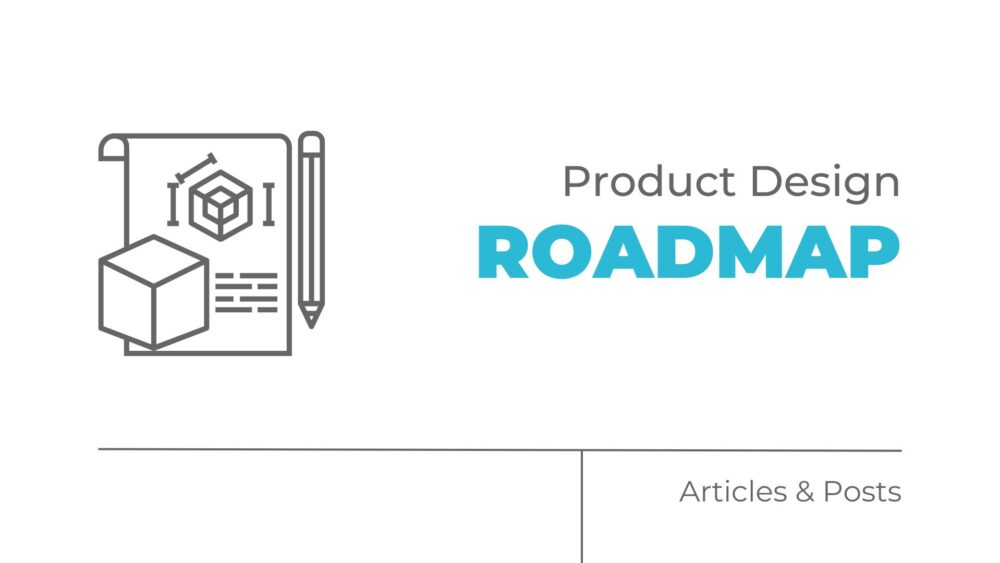When you’re on a mission to create a standout product, having a solid product design roadmap is your best friend.
Think of it like setting your GPS before a road trip – you need a clear route to reach your destination smoothly.
A well-structured product design roadmap is essential for guiding the development and success of a product.
Product design roadmaps help teams stay focused, aligned, and efficient.
This guide explains the importance of a product design roadmap, what it includes, and how to create one effectively.
Why is a Product Design Roadmap Important?
A product design roadmap is super important for a few reasons.
First, it gives a clear vision and direction for product designers, making sure everyone gets the goals and objectives.
This alignment helps prevent product design failures by keeping all team members on the same page.
A product design roadmap also helps prioritize tasks and allocate resources efficiently.
By outlining the key milestones and deliverables, it allows teams to manage their time and effort effectively, reducing the risk of delays and oversights.
Lastly, a product design roadmap is great for communication and collaboration.
It serves as a reference point for stakeholders, enabling them to track progress, provide feedback, and make informed decisions.
What is in a Product Roadmap?
A good product design roadmap includes several critical components:
Vision and Goals
The vision and goals section outlines the main purpose of the product.
It describes what the product aims to achieve and how it will benefit the users.
This section should be clear and concise, providing a solid foundation for the entire roadmap.
Key Milestones
Key milestones are the significant points in the product development process.
They represent major achievements or stages, such as the completion of a prototype, user testing phases, or the final launch.
Identifying these milestones helps teams track progress and stay motivated.
Features and Requirements
This section details the specific features and requirements of the product.
It includes both functional and non-functional requirements, making sure the product meets the desired standards and user expectations.
Prioritizing these features helps manage the development process effectively.
Timeline
The timeline provides a chronological view of the product development process.
It outlines the expected start and end dates for each phase, helping teams plan and allocate resources accordingly.
A realistic timeline is key for maintaining momentum and meeting deadlines.
Responsibilities
Assigning responsibilities ensures that each team member knows their role and tasks.
This section lists the key players involved in the project, their responsibilities, and the dependencies between tasks.
Clear accountability helps prevent misunderstandings and keeps everything running smoothly.
How Do You Create a Product Design Roadmap?
Creating an effective product design roadmap involves several steps:
Step 1: Define the Vision and Goals
Begin by defining the vision and goals of the product.
Engage with stakeholders to understand their expectations and make sure the vision aligns with the overall business objectives.
A well-defined vision serves as the guiding star for the entire project.
Step 2: Identify Key Milestones
Next, identify the key milestones in the product development process.
These milestones should represent significant achievements and serve as checkpoints for tracking progress.
Make sure to include both short-term and long-term milestones.
Step 3: Outline Features and Requirements
Detail the features and requirements of the product.
Prioritize these features based on their importance and feasibility.
This step involves collaboration between product designers, engineers, and other stakeholders to create a comprehensive and realistic list.
Step 4: Create a Timeline
Develop a timeline that outlines the start and end dates for each phase of the project.
Be realistic about the time required for each task and consider potential risks and delays.
A well-planned timeline helps maintain a steady pace so that your project gets completed on time.
Step 5: Assign Responsibilities
Assign responsibilities to each team member involved in the project.
Clearly define their roles and the tasks they are responsible for.
This step keeps everyone accountable and helps prevent overlaps and gaps in the workflow.
Step 6: Review and Iterate
Finally, review the roadmap with all stakeholders and make necessary adjustments.
A product design roadmap is not static; it should be reviewed and updated regularly based on feedback and changing circumstances.
Iteration is key to keeping it relevant and effective.
At the End of the Day
A product design roadmap is a vital tool for any product development team.
It gives a clear vision, outlines key milestones, details features and requirements, sets a timeline, and assigns responsibilities.
By following the steps outlined above, teams can create an effective product design roadmap that boosts communication, collaboration, and overall success.


Comments are closed.